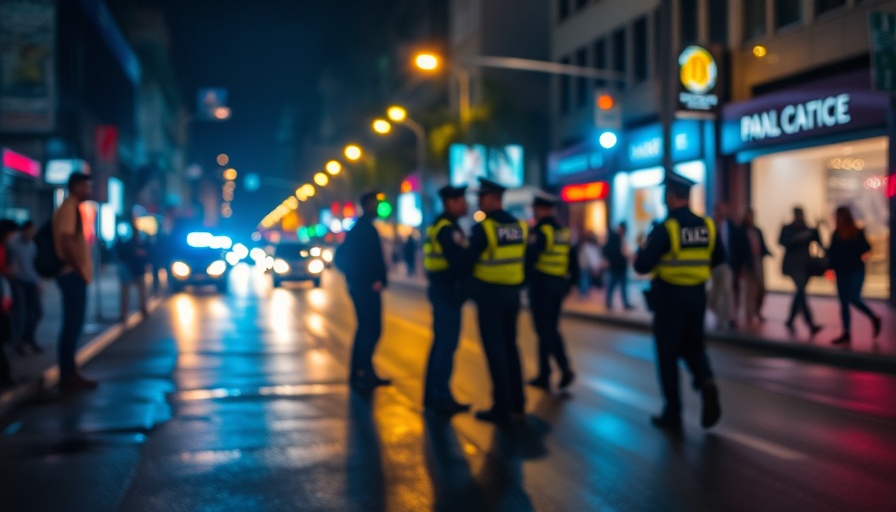
Understanding the Incident: Body Cameras in Action
In California, a recent traffic stop escalated into a serious confrontation that led to a police-involved shooting (OIS). During this encounter, the driver allegedly made a move to take an officer's TASER, prompting immediate action from law enforcement. Body-worn cameras (BWC) captured this high-tension moment, illustrating the critical role of technology in contemporary policing. The use of body cameras not only provides transparency but also helps to ensure accountability for officers involved in such incidents.
The Role of Technology in Police Engagement
Technology's impact on policing cannot be overstated. Body cameras serve a dual purpose: they protect the public by ensuring law enforcement actions are recorded and scrutinized, while also safeguarding officers from accusations of misconduct. This incident serves as a reminder of the practical challenges officers face daily and the potential risk associated with traffic stops. According to a report by the Police Executive Research Forum, adopting body cameras can significantly enhance trust in community relations.
Risks and Challenges During Traffic Stops
At its core, this incident highlights a risk that officers must navigate: the unpredictable nature of traffic stops. Each encounter brings the potential for volatility, as was seen in this case. In fact, studies indicate that police traffic stops can escalate quickly due to various factors, including driver behavior and environmental distractions. Furthermore, training programs must adeptly prepare officers for these scenarios, emphasizing decisive, safe responses when faced with potential threats.
Insights on Law Enforcement Training Programs
The importance of police training in relation to officer safety is paramount. The dynamics of a traffic stop can shift rapidly, and police officer training must evolve to encompass realistic simulations that replicate these high-stress situations. Invoking evidence-based practices learned through community engagement and historical data will be crucial for developing robust training protocols that prioritize the wellness and safety of all involved.
Policy Reforms and Public Safety Measures
Following incidents like these, the discussion about police reform often emerges. Advocates argue for enhanced training on de-escalation techniques and comprehensive mental health resources for officers. These changes could potentially reduce the frequency and severity of officer-involved shootings, ensuring safer interactions for both officers and the community.
Conclusion: Building Trust Through Accountability
The integration of body cameras and the ongoing evaluation of law enforcement policies play a significant role in fostering public trust. As agencies assess operations and use of technology, it becomes essential to focus on community engagement strategies and training improvements. Heightened awareness of these issues can pave the way for a more transparent police force.
For members of police departments, policymakers, and researchers, the lessons from this incident serve as a rallying call to push for initiatives that prioritize both officer safety and community accountability. Engage with this topic further to stay informed and advocate for necessary changes in law enforcement practices.
 Add Row
Add Row  Add
Add 

 Add Element
Add Element  Add Row
Add Row 




Write A Comment